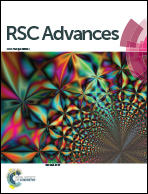Further understanding the response mechanism of lignin content to bonding properties of lignocellulosic fibers by their deformation behavior
Abstract
Lignocellulosic fiber has been increasingly used in many fields. The properties of fiber-based materials are affected significantly by the lignin content in lignocellulosic fibers. In this study, lignocellulosic fibers with different lignin contents were investigated by using the wet fiber deformation behavior and the related response mechanism of lignin content to the inter-fiber bonding properties, and other properties were discussed for improving the high-value applications of lignocellulosic fibers. The results showed the deformation behavior of wet lignocellulosic fibers, including wet fiber flexibility and collapsibility (aspect ratio) which increased from 0.516 × 1012 to 5.454 × 1012 N−1 m−2 and 1.616 to 3.652, respectively, when the lignin content decreased from 24.28% to 2.67%. As a result, the inter-fiber bonding properties of lignocellulosic fibers were enhanced. For instance, the relative bonded area increased from 15.64% to 43.76% and the bonding strength index increased from 3.597 N m g−1 to 84.065 N m g−1 with the increase in fiber deformability. Consequently, a more compact fiber network could be formed, showing a significant decrease in the bulk property. Therefore, the contradiction between physical strength and bulk properties of the fiber network could be further revealed by the wet fiber deformation behavior, which was influenced significantly by the lignin content in lignocellulosic fibers.


 Please wait while we load your content...
Please wait while we load your content...